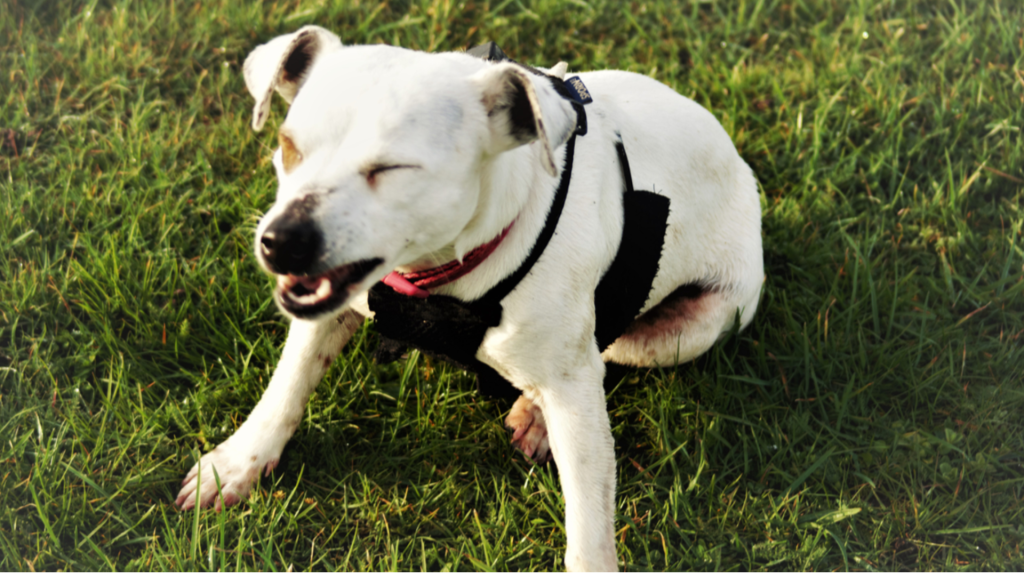Most dog owners have watched their furry friend scratch at the carpet with determination and found themselves wondering why do dogs scratch the carpet.
This behavior can be puzzling and sometimes frustrating. Dogs scratch carpets for several reasons, from instincts to comfort-seeking behaviors.
I’ll explain the main reasons behind this common canine habit. You’ll learn what drives dogs to scratch carpets and when this behavior might signal something important.
This blog covers the top causes of carpet scratching in dogs. We’ll explore instinctual behaviors, environmental factors, and health-related reasons. You’ll also find practical tips to manage or redirect this behavior effectively.
Top Reasons: Why Do Dogs Scratch the Carpet
Many dog owners notice their pets scratching the carpet and wonder what drives this quirky behavior.
While it might seem random, dogs often scratch carpets for specific reasons tied to instinct, emotion, and environment. Understanding these motivations can help you address the behavior effectively.
The following are a few reasons why do dogs scratch the carpet.
1. Instinctual and Nesting Behavior
Dogs are hardwired to dig and scratch as part of their ancestral instincts. In the wild, canines would scratch the ground to create a comfortable, safe spot for resting or hiding food. This natural urge often persists in domestic dogs, leading them to scratch carpets as a way to “prepare” a suitable resting place, even if they’re indoors.
2. Marking Territory
Dogs have scent glands in their paws, and scratching the carpet releases their scent onto the surface. This behavior helps them mark territory and assert ownership of a particular area, making it feel more familiar and secure. This is especially common in unspayed or unneutered dogs, or when new pets or people are introduced into the home.
3. Boredom and Lack of Stimulation
If a dog isn’t getting enough physical or mental exercise, it may turn to carpet scratching as a way to entertain itself. Boredom-driven scratching is often accompanied by other attention-seeking behaviors, such as barking or chewing. Ensuring your dog has enough playtime and enrichment can help reduce this type of scratching.
4. Anxiety or Stress Relief
Scratching the carpet can be a coping mechanism for dogs experiencing anxiety or stress. Triggers might include separation, loud noises, or changes in the environment. The repetitive motion of scratching can provide comfort and a sense of control, helping dogs self-soothe during tense moments.
5. Physical Discomfort or Medical Issues
Sometimes, dogs scratch the carpet because they’re experiencing physical discomfort, such as allergies, skin irritations, or even issues with their paws. The act of scratching may help them relieve itching or discomfort, so it’s important to rule out medical causes if the behavior is sudden or excessive.
6. Excess Energy
Active breeds or dogs that don’t get enough exercise may scratch the carpet simply to burn off excess energy. This behavior often appears alongside other hyperactive actions like racing around the house or chewing on objects. Increasing daily exercise and play can help manage this energy.
7. Attention-Seeking
Some dogs quickly learn that scratching the carpet gets a reaction from their owners, whether positive or negative. As social animals, dogs may use this behavior to seek interaction or attention, especially if they feel ignored or left alone for extended periods.
When to Be Concerned if Your Dog Keeps Scratching Carpet
Occasional carpet scratching is normal for dogs, but persistent or sudden increases in this behavior can signal a problem. Be concerned if your dog’s scratching becomes obsessive, causes damage, or is accompanied by signs of anxiety such as panting, pacing, or trembling, especially during stressful events like storms or when left alone.
Scratching linked with other behavioral changes, like withdrawal, aggression, or changes in appetite, may indicate underlying stress, boredom, or even medical issues such as allergies, skin irritation, or joint pain.
If the behavior is new, excessive, or paired with physical symptoms, consult your veterinarian to rule out health problems and get tailored advice for your pet’s well-being.
Solutions to Stop Dogs from Scratching the Carpet
Dogs scratching the carpet can be frustrating, but with the right strategies, you can guide your pet toward healthier habits.
The following are effective solutions to why do dogs scratch the carpet.
1. Provide Alternative Scratching or Digging Spots
Give your dog a designated area, like a scratching mat, digging box, or old blankets, where they can satisfy their instincts. Place these alternatives in spots your dog prefers and encourage their use with treats or praise. This helps redirect their behavior away from your carpet and fulfills their urge to dig or scratch.
2. Increase Exercise and Mental Stimulation
Ensure your dog receives plenty of physical activity and mental enrichment. Daily walks, playtime, puzzle toys, and training sessions help burn off excess energy and reduce boredom-driven scratching. A tired, engaged dog is less likely to engage in destructive behaviors like carpet scratching.
3. Use Positive Reinforcement and Redirection
Reward your dog when they choose appropriate behaviors, such as using their bed or toys instead of the carpet. If you catch them scratching, gently redirect their attention to a suitable activity and praise them when they comply. Consistent positive reinforcement helps reinforce good habits over time.
4. Apply Pet Safe Deterrents to the Carpet
Use pet-safe deterrent sprays or double-sided tape on carpeted areas to make scratching less appealing. These products have scents or textures that dogs dislike, discouraging them from returning to those spots. Always choose deterrents that are safe for both your pet and your flooring.
5. Keep Nails Trimmed
Regularly trim your dog’s nails to reduce their ability to scratch effectively and minimize carpet damage. Proper grooming also helps prevent skin irritations or discomfort that might trigger scratching behavior, ensuring your dog feels comfortable and less likely to scratch.
6. Restrict Access to Problem Areas
Limit your dog’s access to rooms or carpeted spaces where scratching is a problem, especially when you can’t supervise. Use baby gates or closed doors to prevent unsupervised scratching and reinforce boundaries until the behavior improves.
The Bottom Line
Most carpet scratching stems from instincts, comfort needs, or environmental factors. Some cases may indicate health issues that require veterinary attention.
The key is observing your dog’s specific patterns and triggers. Simple solutions like providing scratching posts, increasing exercise, or creating cozy spaces often resolve the issue. Regular nail trimming and addressing any underlying anxiety can also help.
Remember that carpet scratching is normal dog behavior in many cases. With patience and the right approach, you can redirect this habit while keeping your furry friend happy.
Take action if the behavior seems excessive or sudden, as it might signal health concerns worth investigating.









